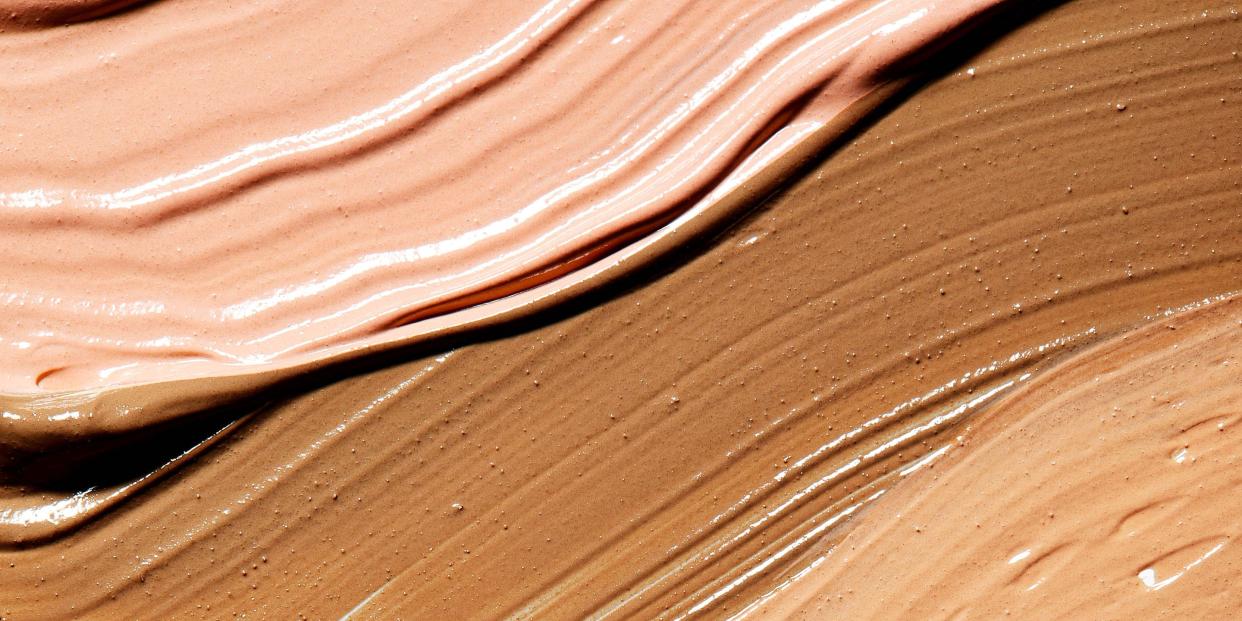This Piece of Information Makes Your Makeup Look Better Instantly

You can basically be a textbook for all things beauty-related—the best mascara, the trendiest nail polish shades, the best shampoo for dry, damaged hair, how to nail an at-home mani...you name it—and still have no idea what someone means when someone asks you what your skin's undertone is.
Why would anyone want to know this? "Knowing your skin undertone may help you choose foundation or color palettes that best suit and complement your hue," says Marlena Orlowska, professional makeup artist for Paul Labrecque Salon and Skincare Spa. It doesn't just guide you in the right direction, though. Knowing your skin's undertone can actually make you look better, too. "It's important to know your skin undertone—it can make the difference between your complexion looking pale and washed-out or refreshed and rejuvenated," adds Crystal Gossman, a New York City-based professional makeup artist.
But here's the thing; while your skin tone—fair, medium, dark—may be immediately obvious to the naked eye, you'll have to look a little bit harder (and really know what you're doing) to figure out your skin's undertone.
Ready to learn, so you can be well on your way to nailing a more sophisticated look? We asked professional makeup artists to teach us exactly how to go about it. Here, the fail-proof method for uncovering your skin's undertone—plus, a curated list of products (concealer, foundation, and more) that are just right for each one.
What are the different types of undertones?
Let's back up a little bit first, since it's helpful to have a little bit of background before you begin. "There are three traditional undertones: warm, cool, and neutral," says Orlowska.
Warm
Warm undertones range from peach to yellow, and golden. Some people with warm undertones also have sallow skin.
Cool
Cool undertones include pink, red, and bluish hues.
Neutral
As you might expect, people with neutral undertones have a mixture of warm and cool tones—essentially they fall somewhere square in the middle of the two.
How to Figure Out Your Skin’s Undertone
There are a few tricks that can help solve this puzzle:
1. Check your veins.
If you can see your veins, you may be able to use their color to identify your undertone, says Orlowska. "If your veins look greenish, then you may have warm undertones. People with blue or purplish-looking veins usually have cooler undertones." If you have neutral undertones, then your veins may appear colorless or match the color of your skin, adds Gossman.
2. Slip on a white T-shirt.
Or any pure white piece of clothing, for that matter. If your skin skews yellow against the clothing, your undertones skew warm. On the other hand, if your skin looks rosy, your undertones skew cool.
3. Think about what colors look best on you.
Here's another sartorial trick to try while you're picking through your closet. If you look best in a color like blue, you have cool undertones, says Gossman. But if you look better in a hue like yellow, you have warm undertones. And, if any shade suits you (lucky you!), then you have neutral undertones.
How to choose the right products for your skin’s undertones
It bears repeating: Knowing your skin's undertones and choosing products that complement it can go a long way in improving your overall look. We asked the makeup artists we spoke to explain what to shades to look for in each category—plus, curated the top products that fit the bill.
Warm Undertones
If you have warm undertones, look for a foundation that skews slightly yellow. For other products, like eyeshadow and blush, look for browns, gold, bronze, and even copper shades.
Cool Undertones
If you have cool undertones, opt for a foundation that looks slightly pink in the bottle. When shopping for other products, stick to hues like reds, pinks, and purple.
Neutral Undertones
People with neutral undertones tend to look best in a foundation that doesn't look overly pink or overly yellow in the bottle—a combination of the two, like peach, is a great option. Shopping for other products? Try nudes, mauves, dusty pinks, shimmering champagnes, soft blues, and even mint.
You Might Also Like

